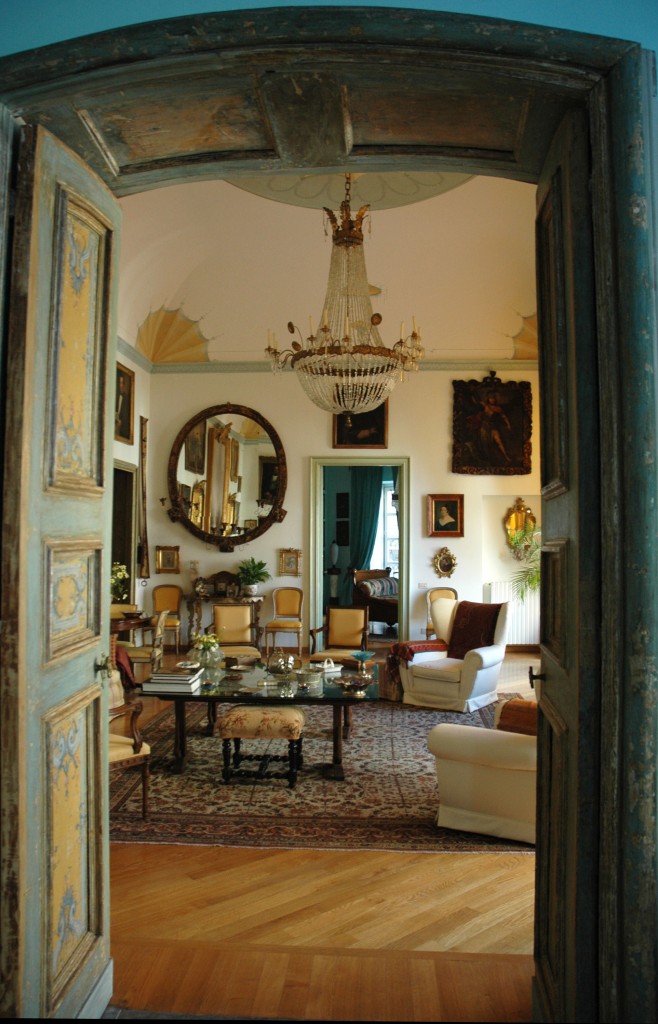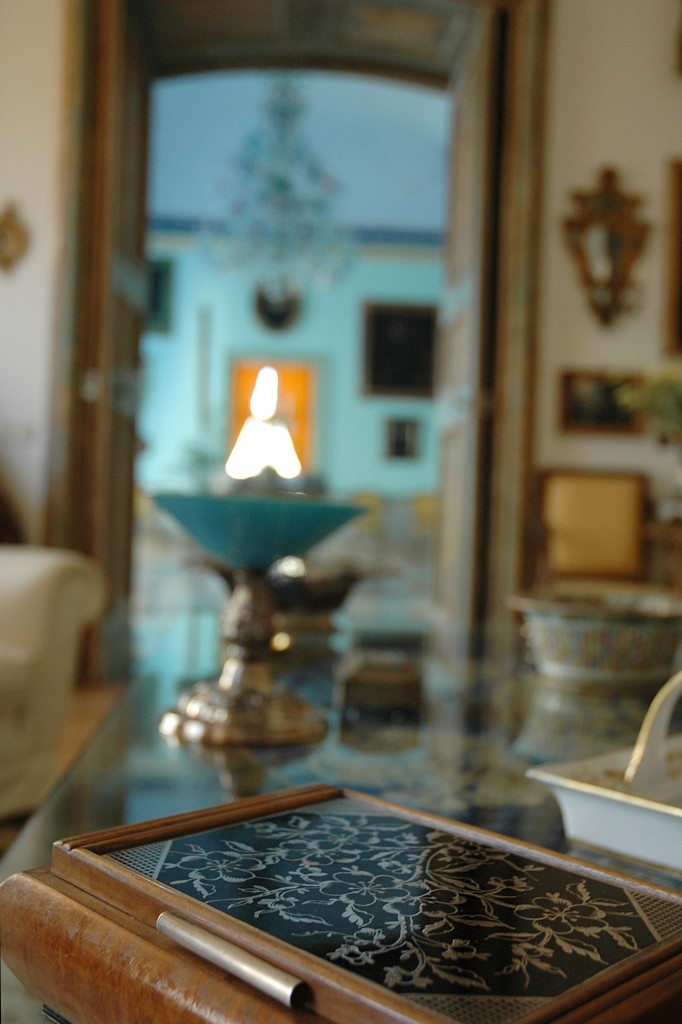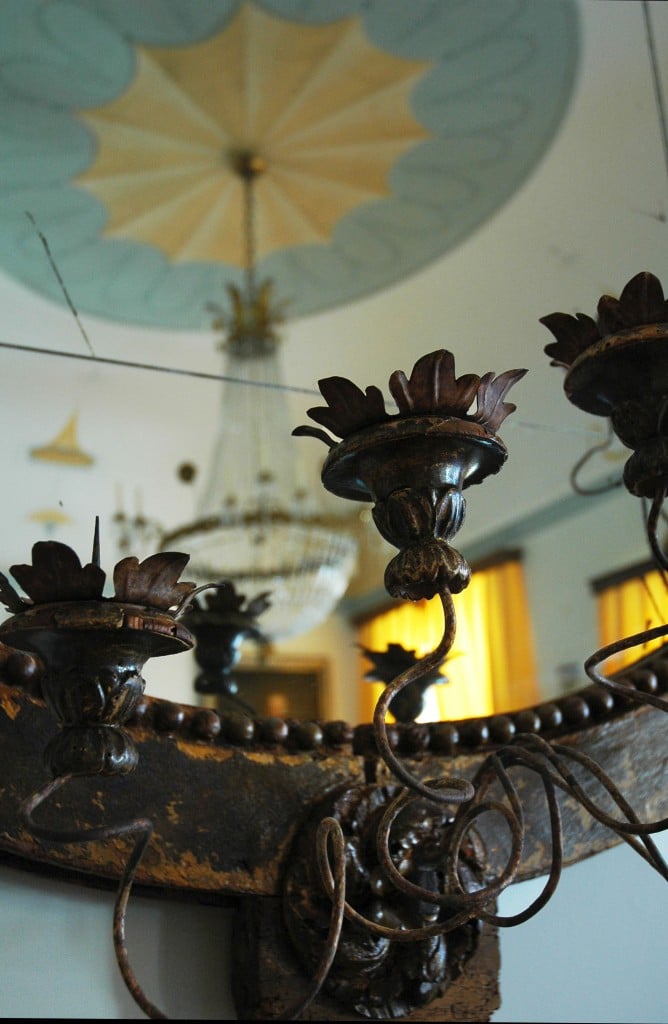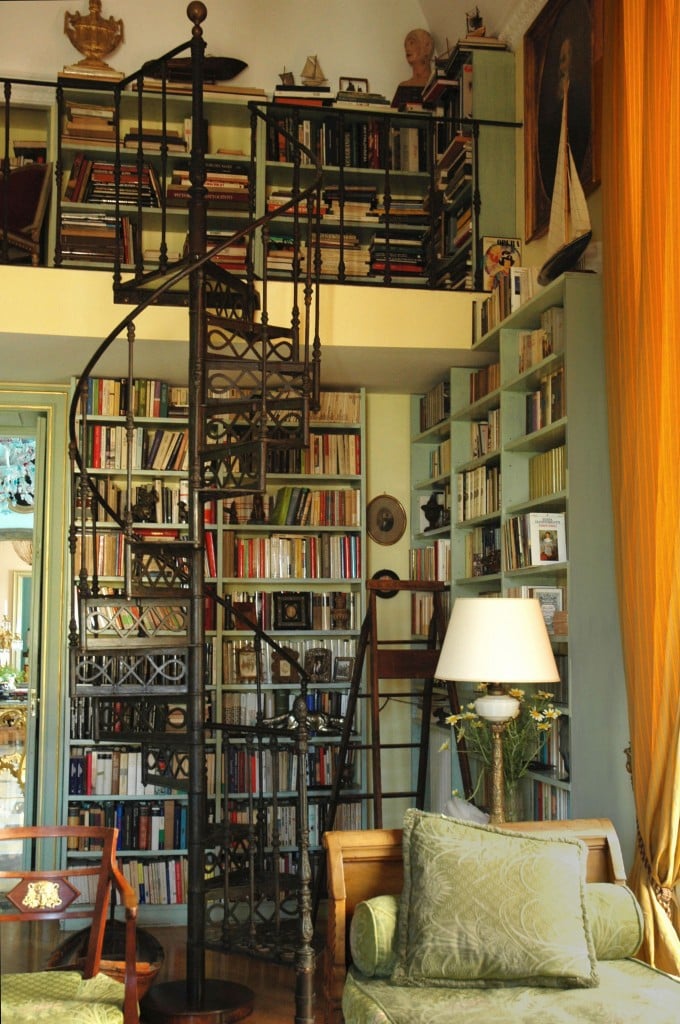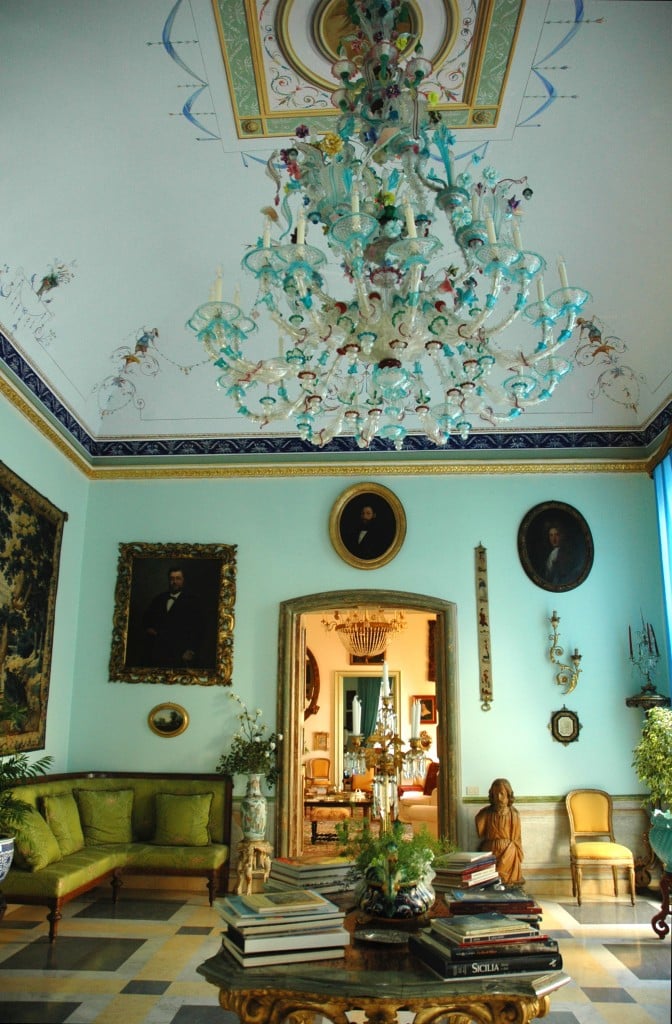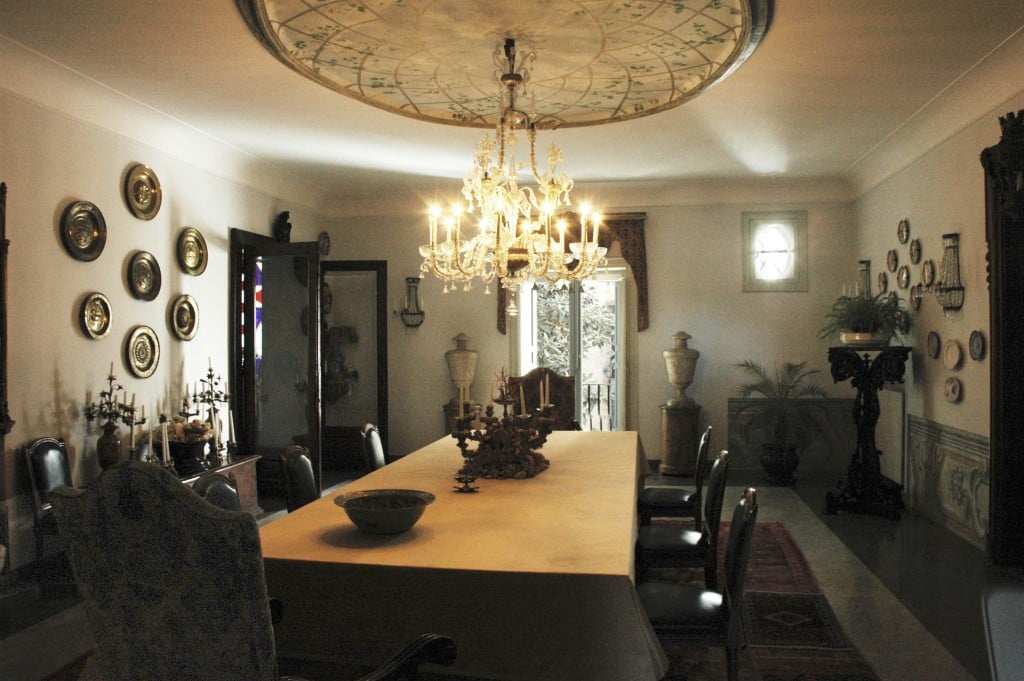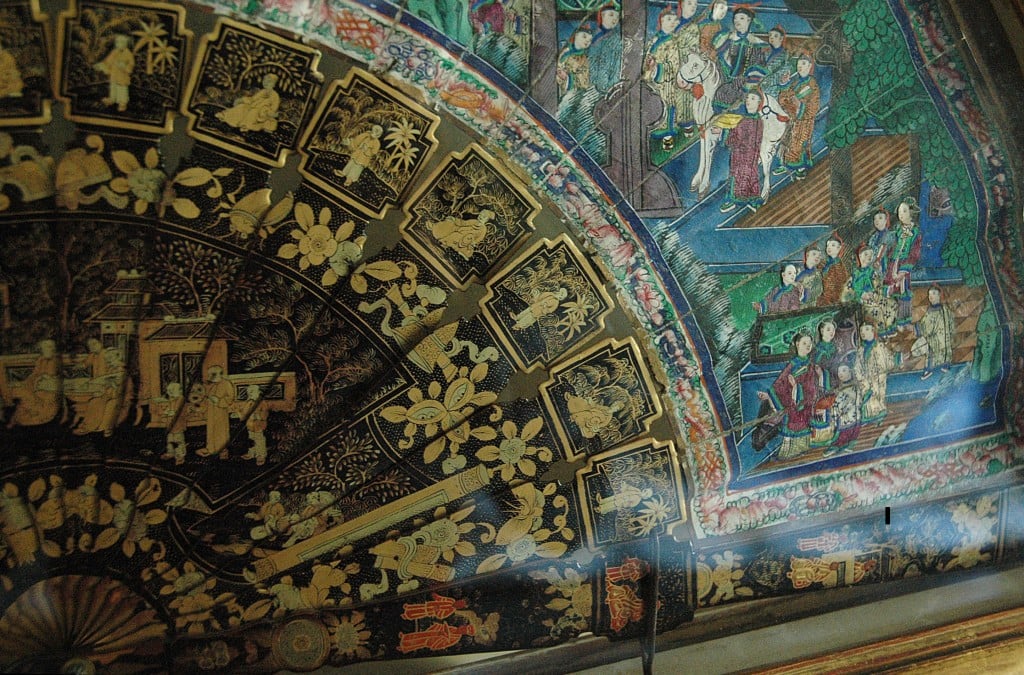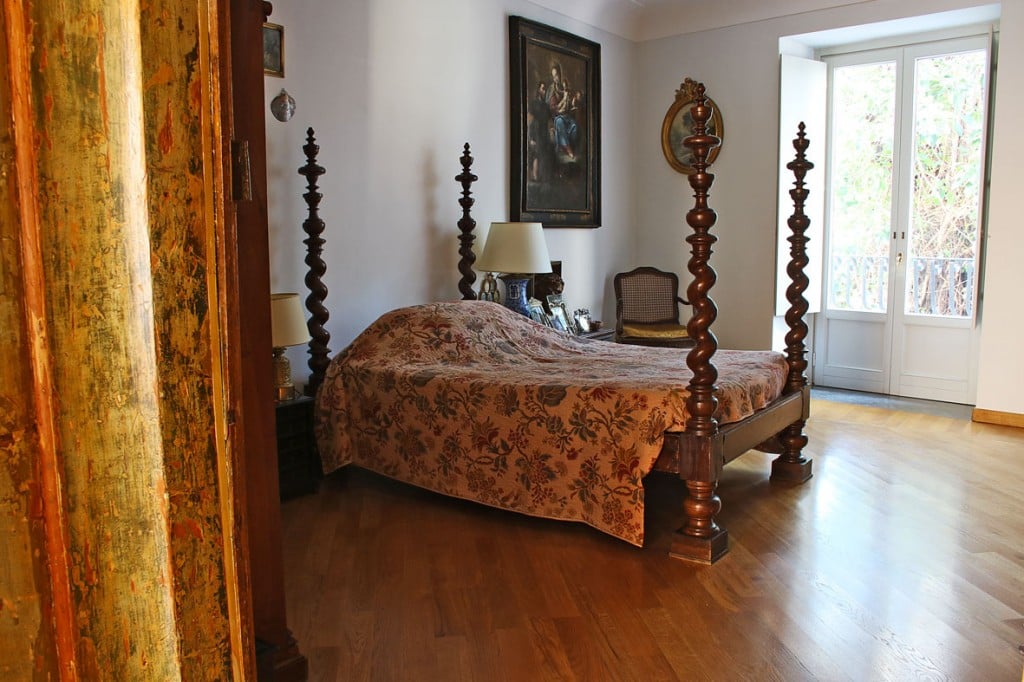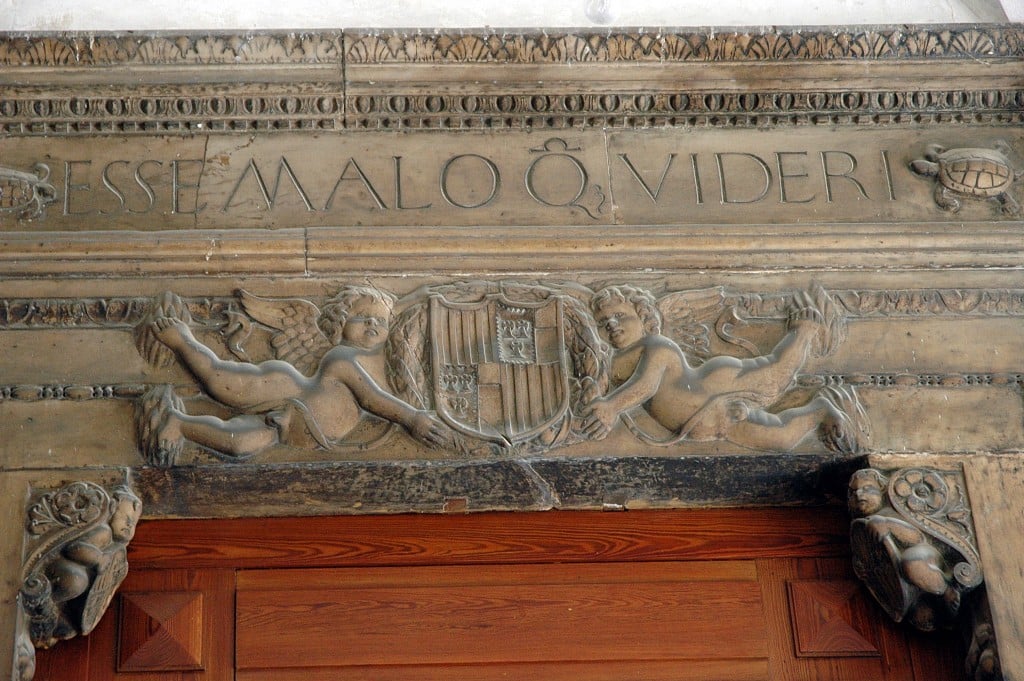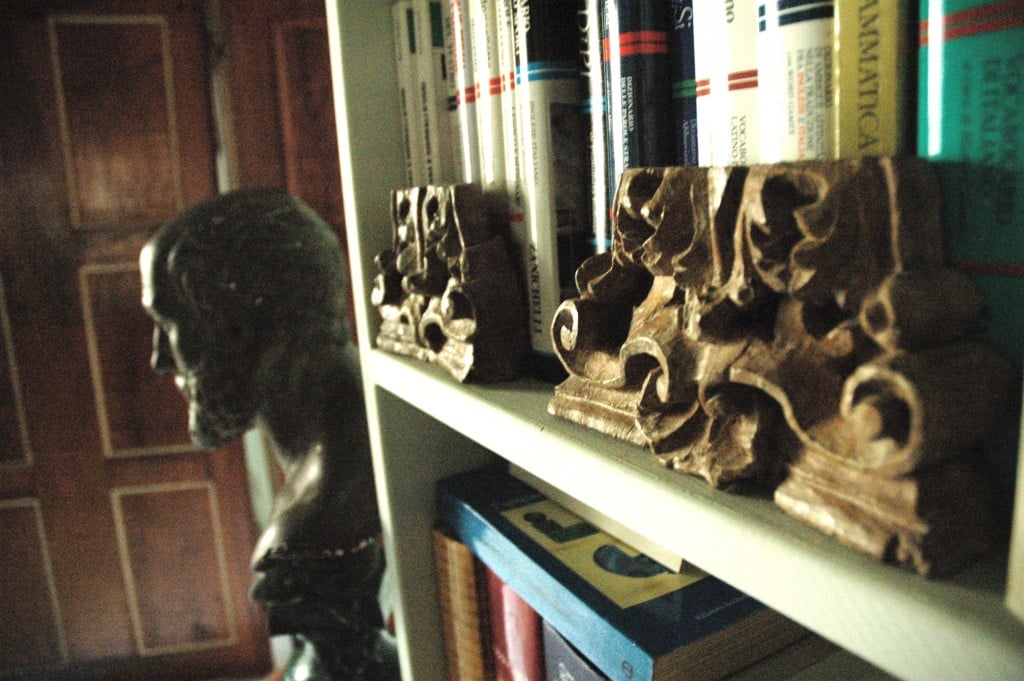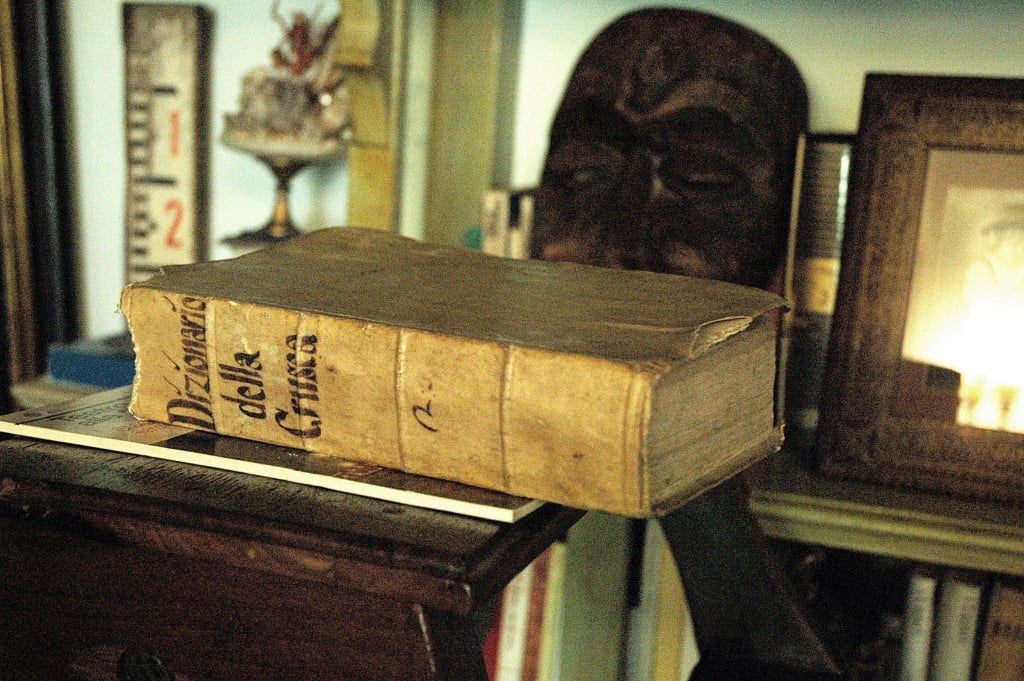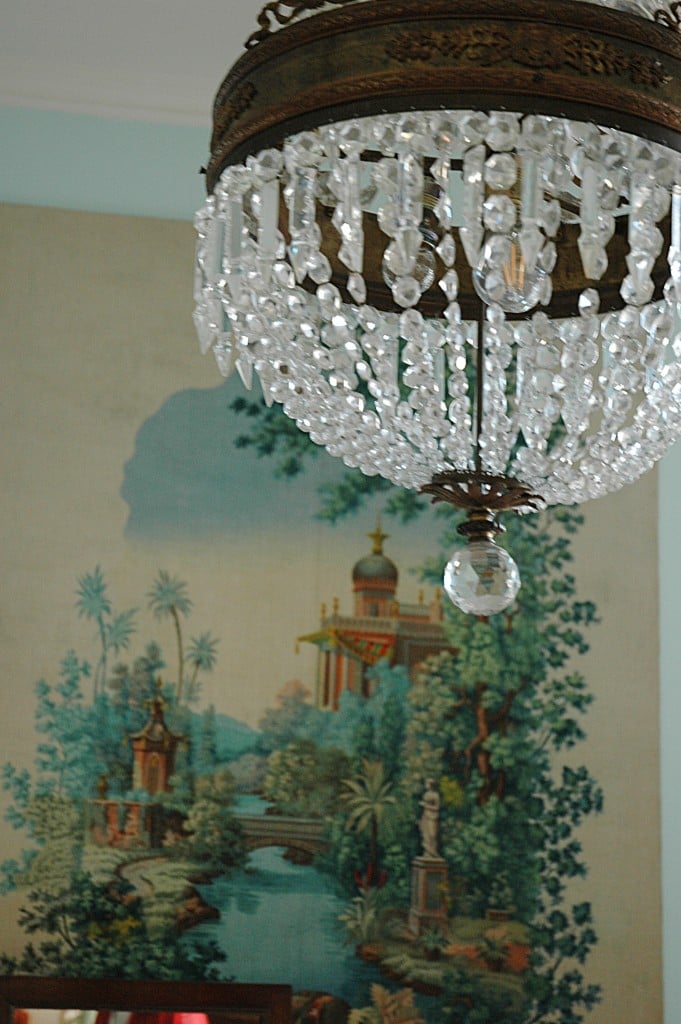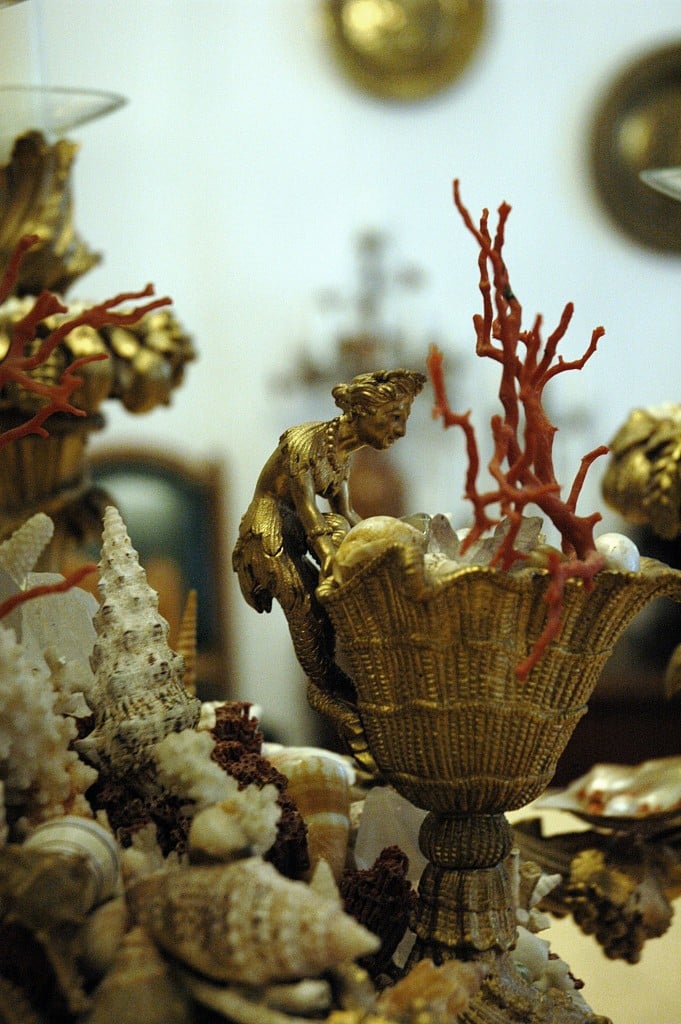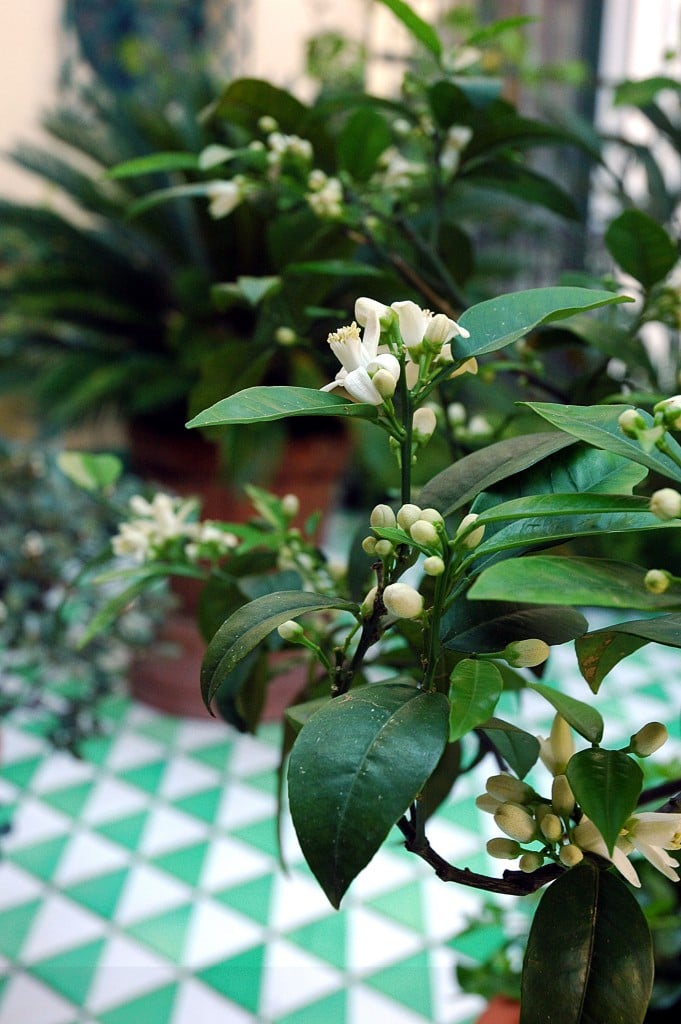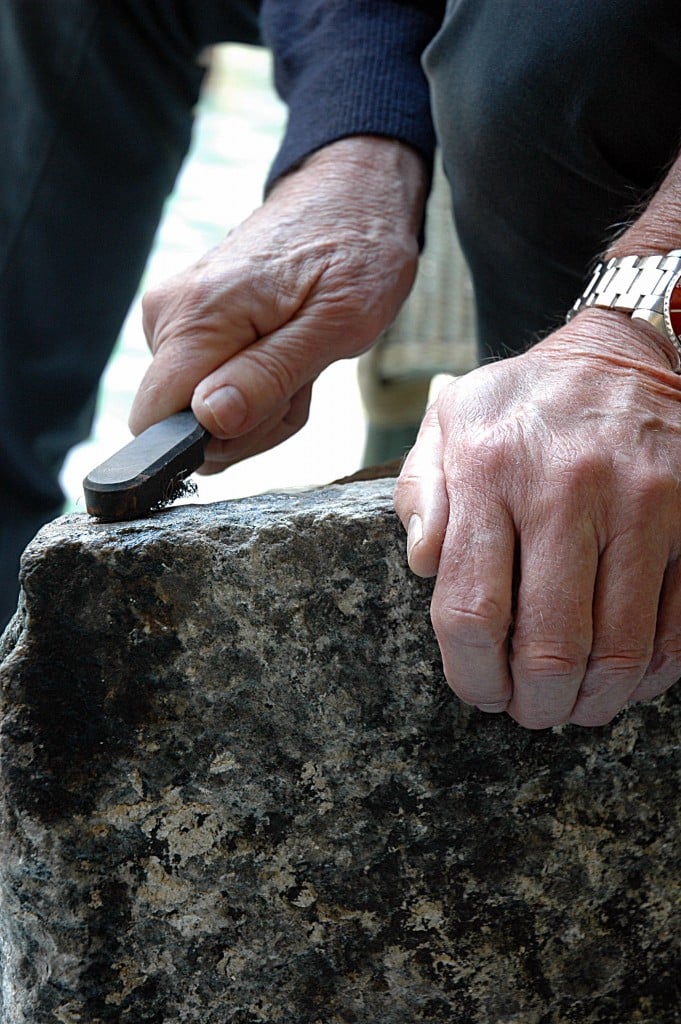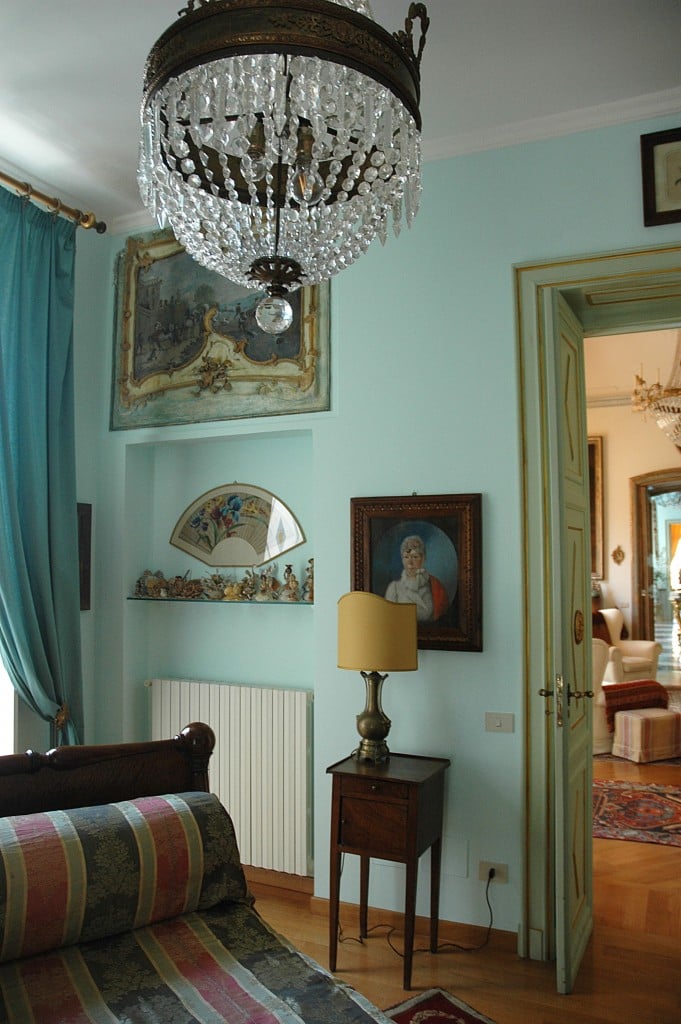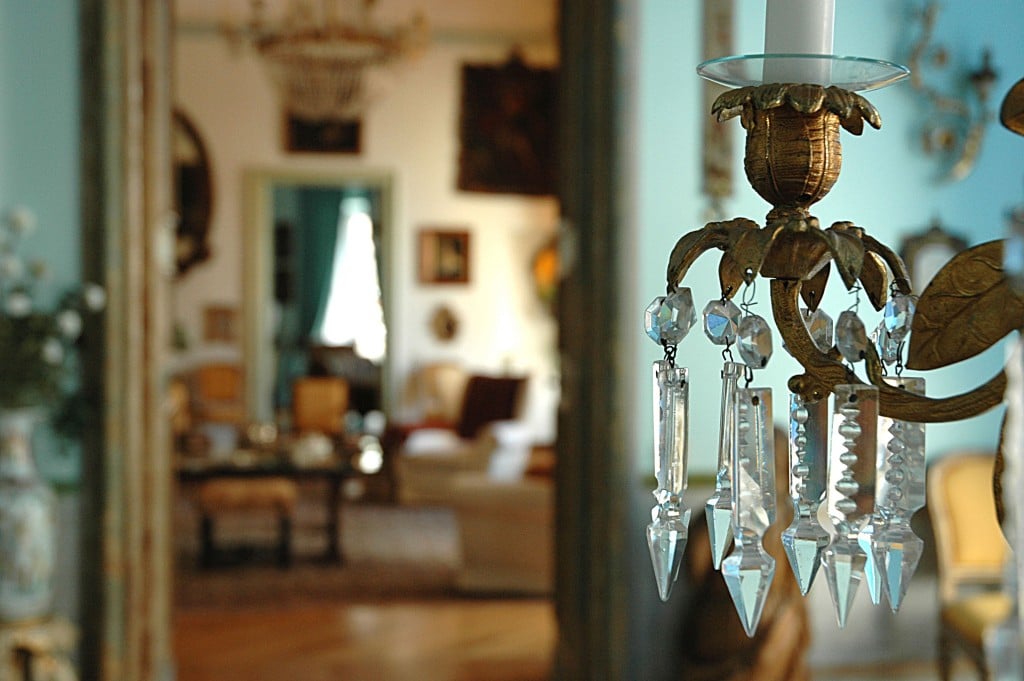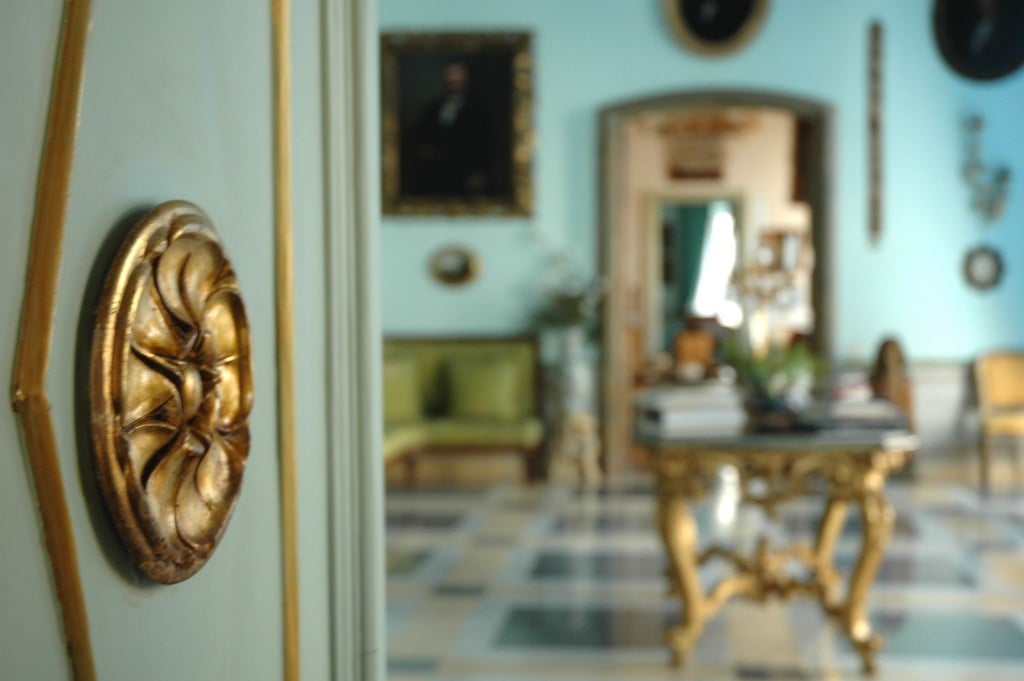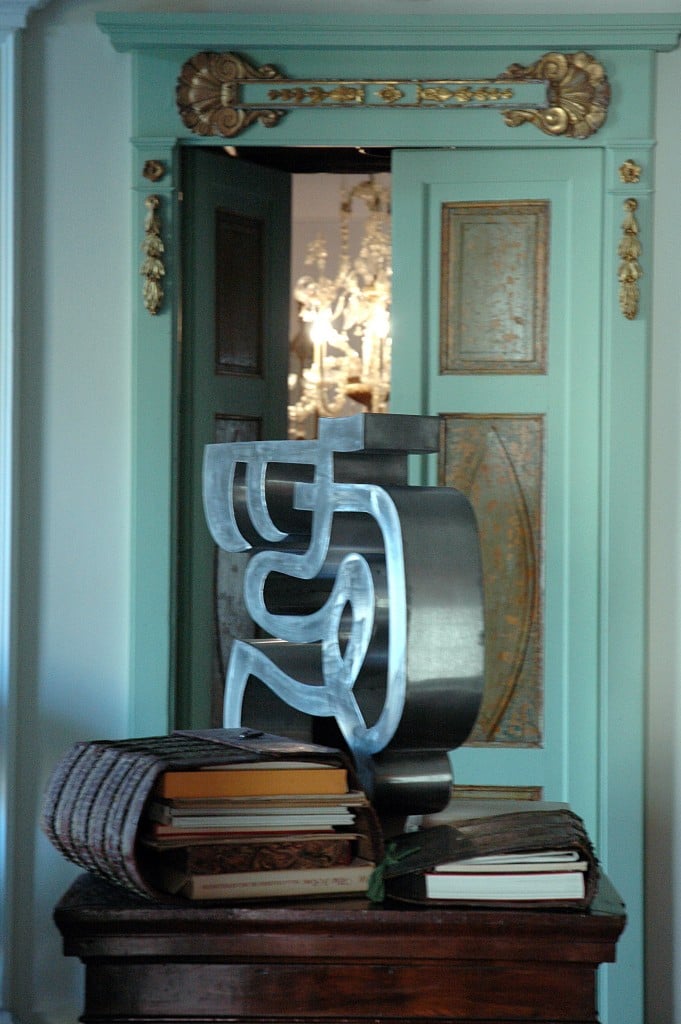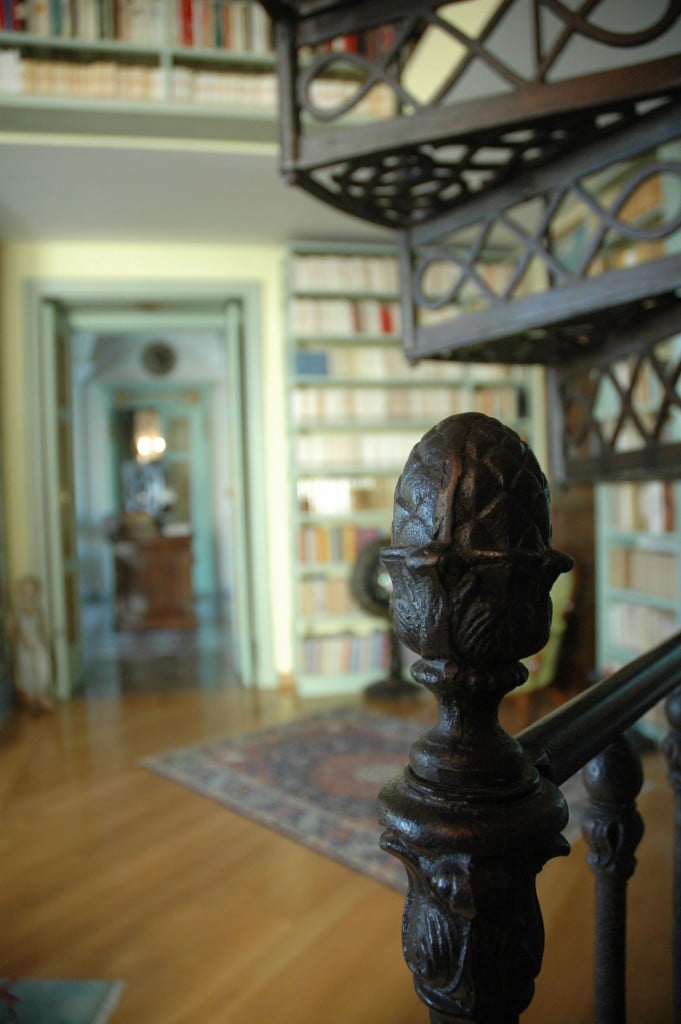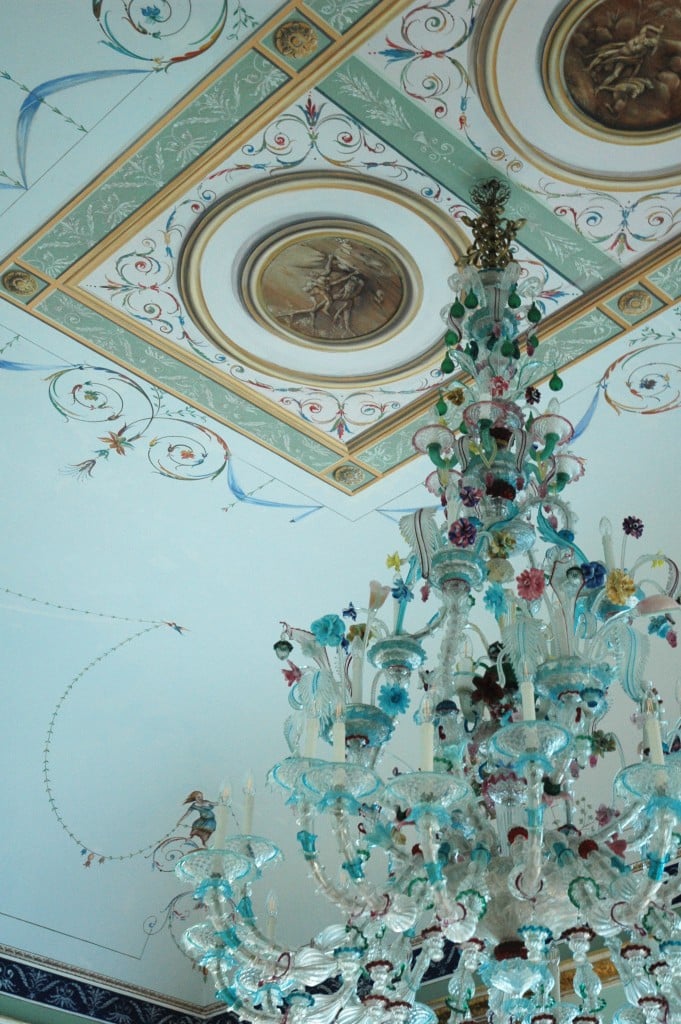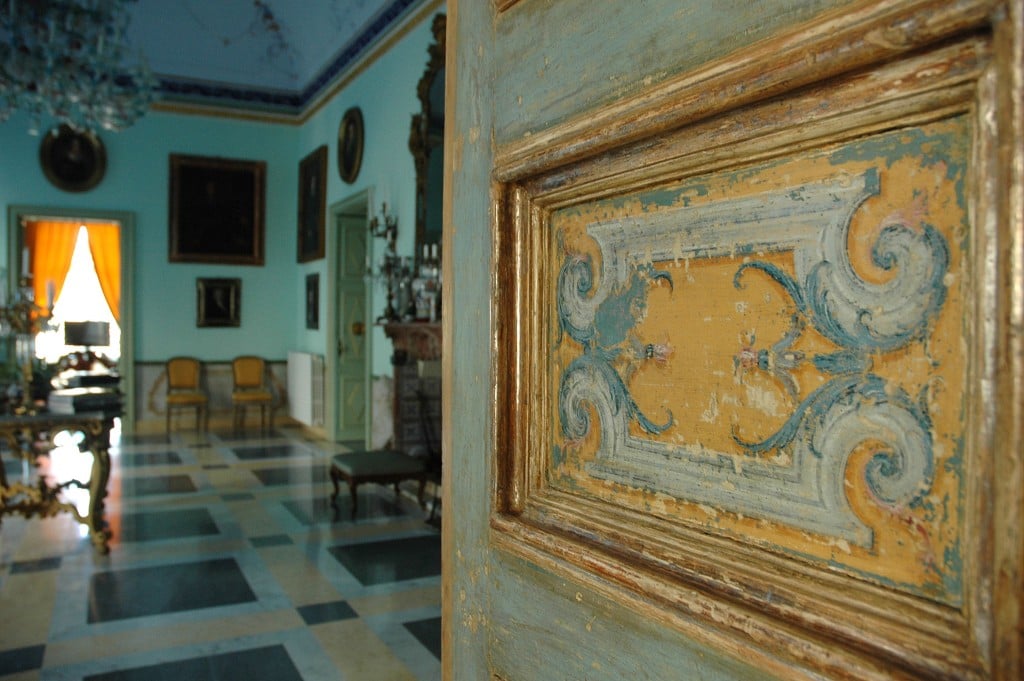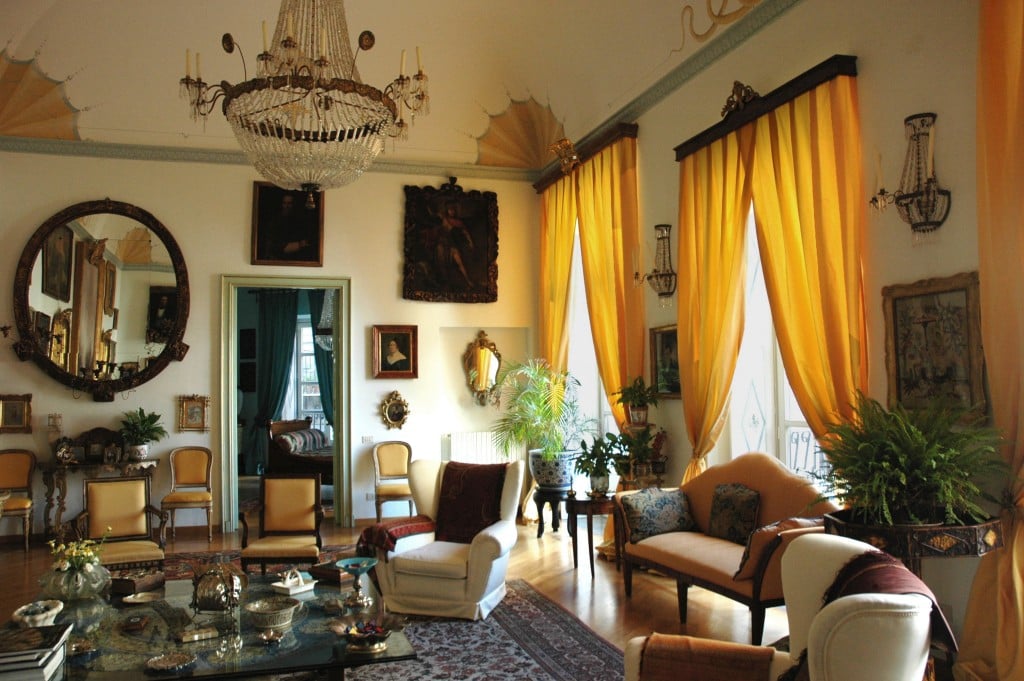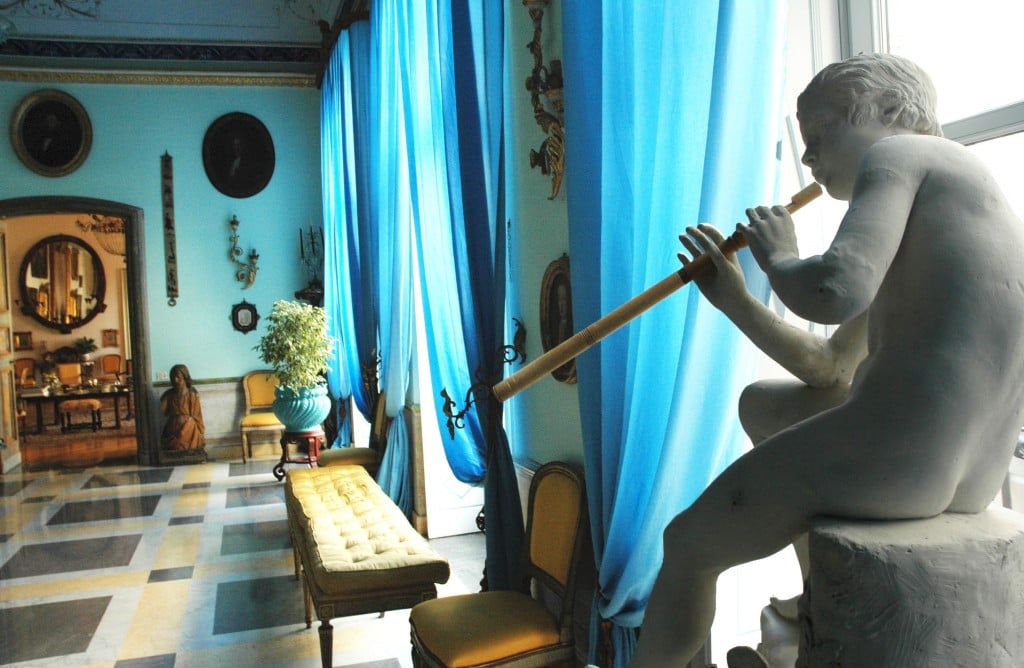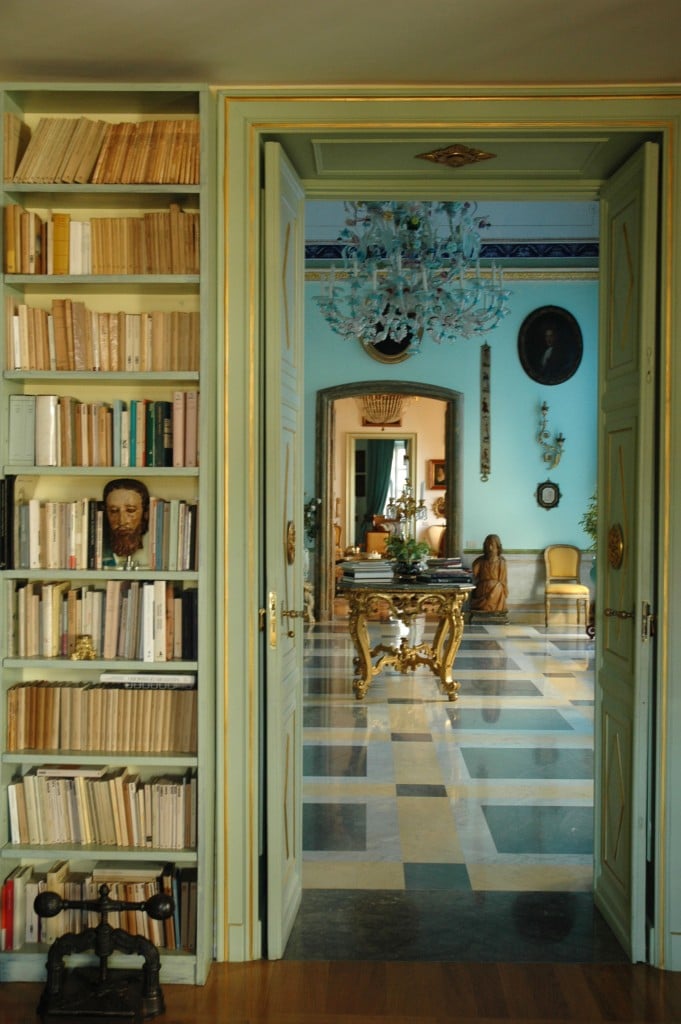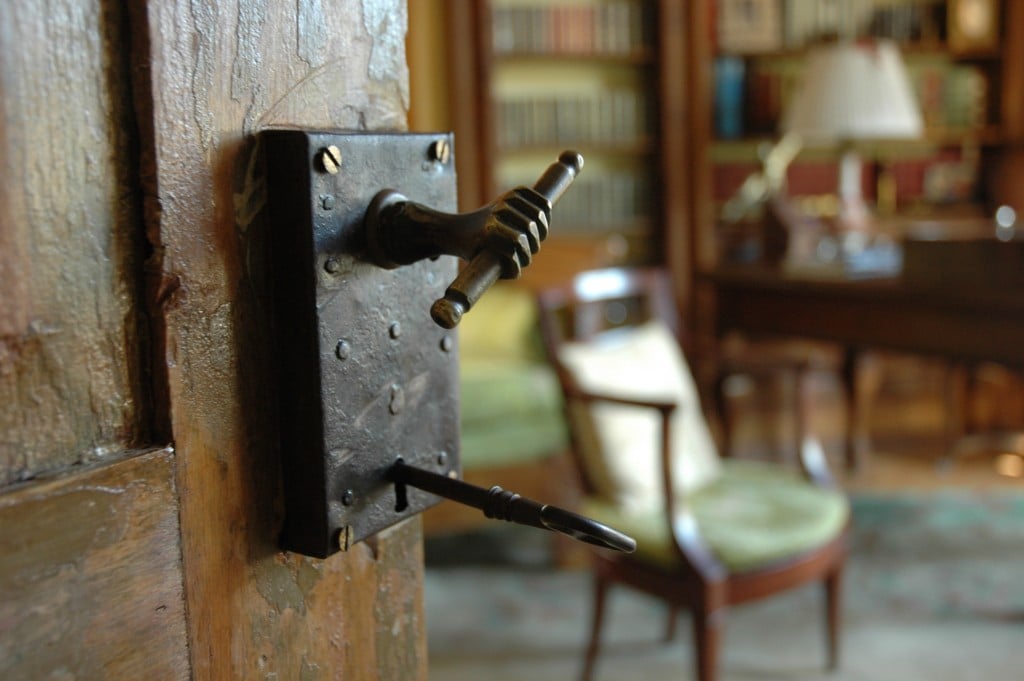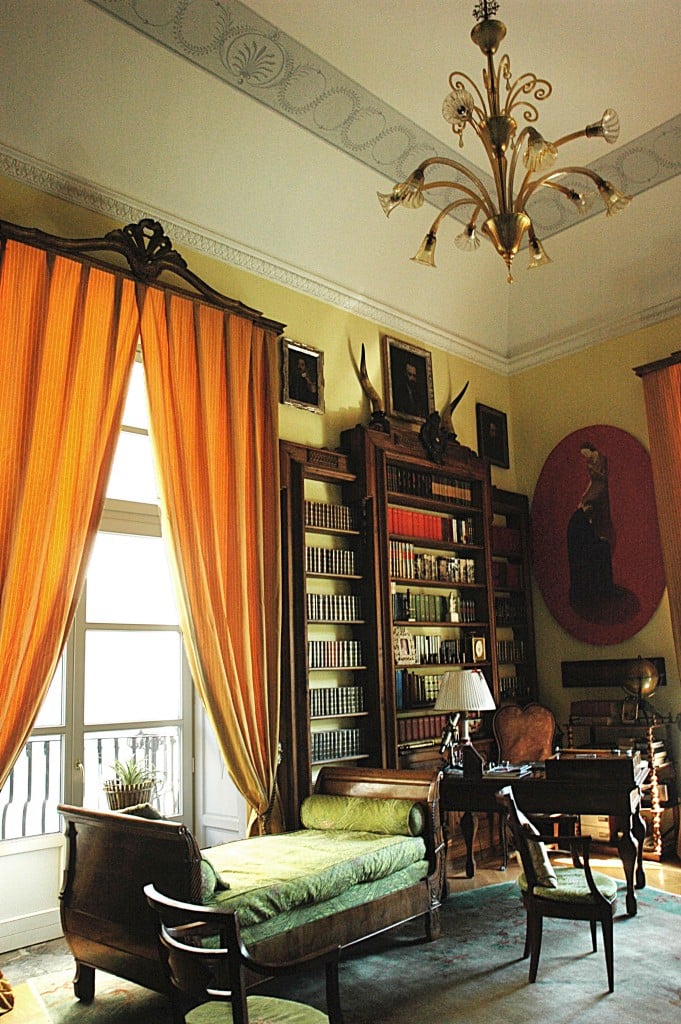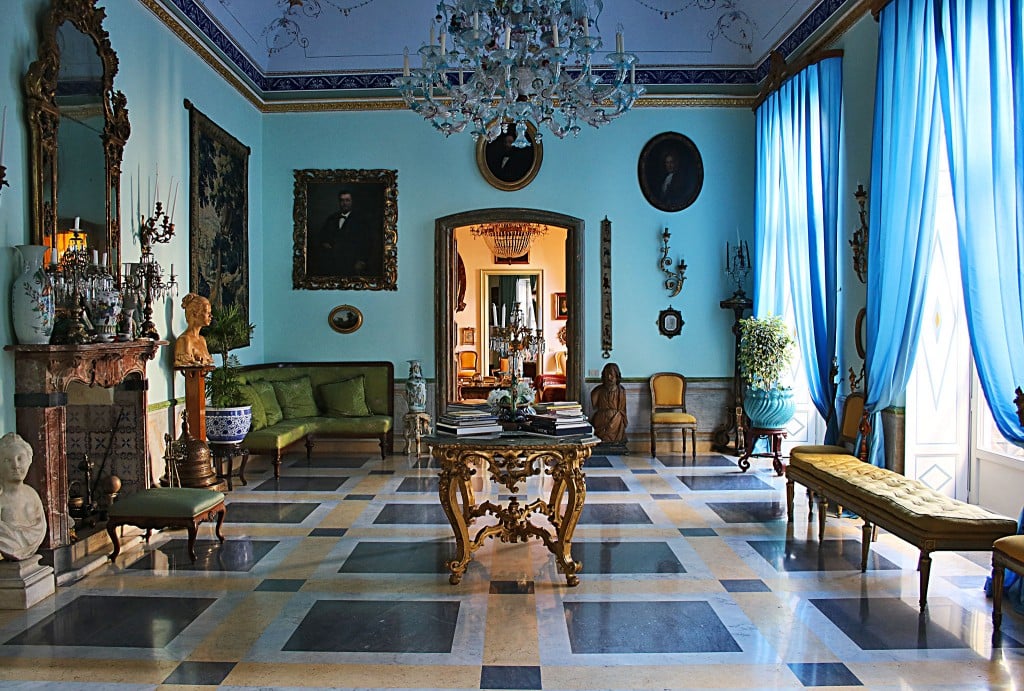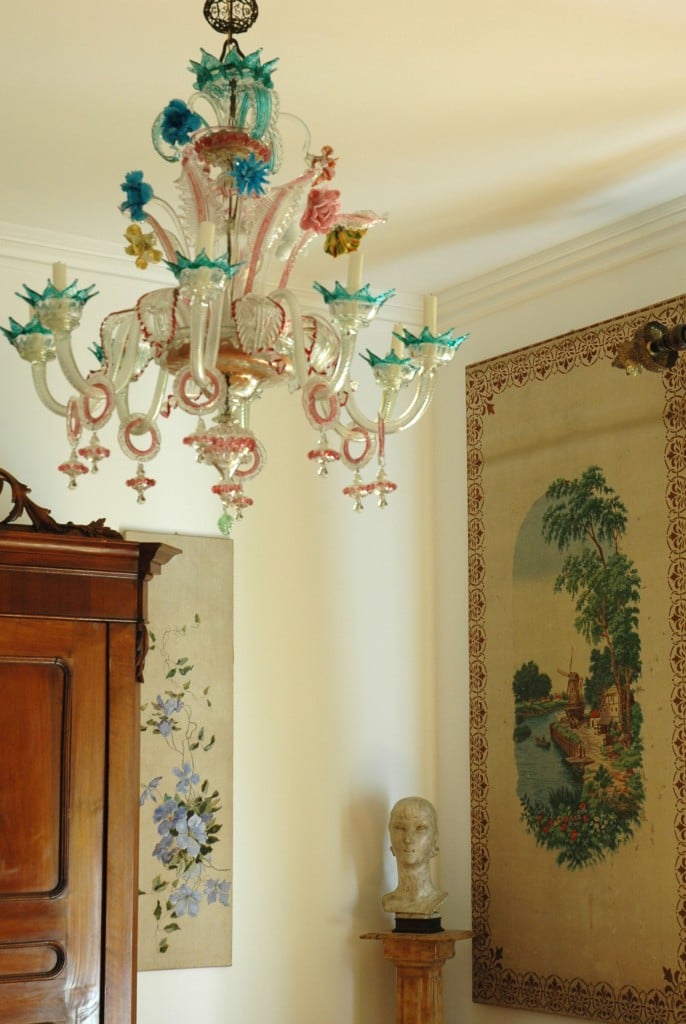One often hears the phrase “beauty is in the eye of the beholder”, and there must have been a great deal indeed in the eye of professor Massimo Cazzaniga (b. 1940) to enable him to see, amidst the peeling walls and the broken windows of the dilapidated apartment which he acquired in 2002, the refined elegance and the magnificence of what today is Palazzo Pantelleria.
We are talking about the historic edifice situated in Palermo between Piazza Giovanni Meli and Largo Cavalieri di Malta, once upon a time the splendid residence of the Requesens, a noble Spanish family which arrived in Sicily during the 15th century in the train of King Alfonso of Aragon, to then become counts of Buscemi and Regalmuto, not to speak of Princes of Pantelleria. A title which gave its name to the palace, which successively belonged to the Gravina and Vàrvaro families.
A trace of the former splendor can be found in documents from the past: Sicilian historian Nino Basile describes it as “decorated all over with embroidery” on the occasion of the celebrations in honor of Filippo V: “trimmed with silver braiding which portrayed the image of the king. Alongside, there were blue and yellow draperies, and from below the balconies there were the noblest possible tapestries, while the rear balconies which looked over the street of the Cavalieri were pleated red and yellow decorations.
The spectacle which professor Cazzaniga found was very different indeed when, in 2002, he visited the palace for the first time: transformed so as to be used as for sales of fabrics and draperies, uninhabited for years and clearly in a state of abandonment, the original structure had been badly transformed so as to gain additional floor space with mezzanines and walls which ruined the original structure. But the value of the palace, to the expert eye of the professor – who had passed his entire life in the restoration of old homes, beginning when he was only 26 years old – consisted in what it he been and what it would eventually become.
Michelangelo Buonarroti maintained that when he looked at a block of marble he already saw within it the form of its work of art and that his work consisted solely in eliminating the superfluous, the excess marble which imprisoned the statue in order to make visible what in his mind was already there. What Cazzaniga saw in Palazzo Pantelleria and his first work on it the were, in this sense, Michaelangelesque: the liberation of the original architecture from what is called in architectural jargon “structural superfetation”, i.e. the walls and dividers which, over the years, had fouled an disfigured its beauty and harmony, as for example the mezzanines which divided in two the beautiful vaulted ceilings of the salons, 20 feet (six meters) high.
Six months were needed to liberate the structure from its block of marble and restore it to new life, to bring it back to its original state. This was the first step in a slow and knowing creative process which redesigned the internal spaces with an exquisite taste and an immense culture which express and demonstrate the decades-long experience of the professor in the field of the restoration of old houses: the city of Milan owes to his work thirty or so old homes restored and re-consigned to their former splendor.
Q. From Milan to Palermo, why? And why Palazzo Pantelleria?
A. “My father maintained that an exemplary lifestyle would consist of six months in the countryside and six months in Palermo, given that the city has the best climate in all of Italy”, the architect remembers, smiling, adding that life in the capital of Sicily is very fine indeed and not solely because of the mild climate: the kindness of the persons, the nearby presence of the sea, and the priceless cultural and artistic patrimony have made the city his second home for six months of the year, from October to April, exactly as the sage saying of his father had suggested. “I wished to give a gift to this city”, explains the architect, “this was not an ordinary edifice, it was a building full of history, it deserved to be given its just due”.
And, crossing the threshold of the palace, as it looks today, this is precisely the sensation with which one is immediately struck: that of being immersed in the past, to make a leap backwards in time. An abundance of beauty of every sort: sculptures, marble, ceramics, antique furniture, candelabras, frescoes, works of art – and a work of art in itself – the palace transmits to the visitor who has the fortune to stroll through its salons emotions which are almost Stendhalian, so many and so striking are the details before which one can stop to admire.
It is impossible to describe in these few lines all the objects, the works of art, the antique objects, the furniture, and the paintings enclosed within the walls of the building. Just to enumerate them one would need pages and pages of ink. To enter Palazzo Pantelleria is a bit like setting foot in a hothouse where hundreds of rare and precious orchids from every part of the world are grown: the senses are stimulated wherever the eye glances.
It is possible to stroll through its corridors, extends one’s glance through the series of its salons and then decide, on each different occasion, where to stop to enjoy the individual details and listen to the stories which the family members of professor Cazzaniga, Francesco and Anna, the exquisite hosts who receive guests, will be happy to recount.
Since the year 2016, in fact, it has been possible to sleep over in this beautiful monument – a “Museum Home”, and this is probably the most suitable phrase to define it. This lovely dwelling previously remained uninhabited during the summer months during which the professor took refuge in the middle of the countryside of the province of Milan. Leaving it empty was a shame, without calculating the costs of restructuring and maintaining it. Accordingly, the idea of the Bella Palermo association (www.labellapalermo.com) was to open the doors to a select public of guests who were interested in living the city in a different way, offering them the possibility of renting the entire structure with its five bedrooms – three doubles and two singles with a total capacity for sleeping eight guests – in order to live immersed for a few days in art and history. “It is not a question of luxury, but of beauty” reads the page of the website. The guests, in this way, have the possibility of sleeping in an 18th century bed, enjoying the fascination of an historic dwelling and all the treasures which it encloses, taking all the time necessary for exploring it and enjoying the unique pieces it houses.
In so doing, they can discover, for example, that the piece of furniture at the entrance on which an iron sculpture of Giulio Ciampi rests is, in reality, the pulpit of a church, found in an antique shop in the northern Italian province of Bergamo, that the painting on canvas on the left struck by the glance immediately upon entering the palace represents Saints Mark and Marcellino being led to their martyrdom, probably the preliminary sketch of the famous painting of Paolo Veronese, over five by six yards in size, which is currently in the church of Saint Sebastian in Venice. Sticking out as the centerpiece of the dining room table , amidst bronze, coral, and shells which compose it, are sinuous sirens leaning on marine shells and stretching to admire their reflection or perhaps some gleam from the bottom of the sea.
One can admire the marble candelabras from Morocco, the Venetian lanterns supported by Romanesque columns, and some precious examples of antique fans which the professor passionately collects.
Entering into the lovely library, the glance can gaze along an impressive collection – 16,00 volumes – which belonged to the historic director of the Corriere della Sera, Giulio Nascimbeni – which also houses a correspondence between Nascimbeni and Nobel Prize-winning poet Eugenio Montale.
Turning one’s gaze towards the sequence of salons, one will remain suspended between the shades of blue – is this the same cerulean which Basile saw in 1700? – which inundate this space, and will remain in ecstasy before the forms and tints of the Murano blown glass, a chandelier which dangles from the beautiful vaulted and frescoed ceiling, which arrived here in twelve packing cases and was given electrical illumination after a careful work of restoration. At the end of this series of salons is one of the original pieces of the palace: an 18th century fresco representing the return to Palazzo Pantelleria of the Prince.
Lombardy, France, Morocco, Venice … the works of art which this dwelling houses comes from many different epochs and many a different place, from antique dealers, collectors, auction houses, but also from dealers in second hand good and from street markets.
It is not unusual for the friends and relatives of Cazzaniga to find him on the terrace – amidst lemon, orange, and tangerine trees, palms of various types, Bird of Paradise plants, and hibiscus – intent on maneuvering with turpentine, strippers, solvents, and small hammers to clean his latest discovery. Perhaps a piece fished from bric a brac in a stall or stand in Piazza Marina but which the educated eye of the professor succeeded in finding, pearls which, with pleasure and feeling, he brings back to new life (just as he has done, on a larger scale, with the entire palace). It is from these places, for example, that the capitals of the library of the game room-study, in the center of which there is a twentieth century model of firemen in scale, the antique carapace of a tortoise under a bench, and a parchment edition of the dictionary of the Academy of the Crusca next to the library all come.
And the fine oval ceramic dish which makes a fine show of itself among the dishes hung on the walls of the dining room is also a pear recovered from the stalls of Piazza Marina. An unknown used goods dealer utilized it on Sundays to hold First and Second World War medals. Form and make drew the attention of the professor who, with a more careful examination, found on it a crowned “N”, the symbol of the royal ceramic works founded by Bourbon King Carlo of Naples and his wife, where the renowned Capodimonte ceramics were produced.
What the professor does could be called “adoptions”. It is impossible to force him to say which is his favorite piece, “they are like children”. It is a question which makes no sense. Each piece is a separate story, has its own value, its precious place within these precious walls.
Not for nothing, the comment which is most often heard is how much one perceives the love with which this house has been designed. Love of history, art, culture, and antique objects. And the most flattering comment? “That his house seems to have constructed just as it is, that it has been like this for centuries”
Q. A work of restoration, of recovery, which is, therefore, a perfect success.
A. Pablo Picasso said that art brushes away from the soul the accumulated dust of everyday life. The art of professor Cazzaniga has authoritatively brushed away from the soul the dust and neglect accumulated over centuries in this place full of history, throwing full light on its great intrinsic beauty with the touch of a sublime gardener. “What is done is not important”, wrote Ray Bradbury in Fahrenheit 51, “as long as you change something that previously existed into something which then carries our imprint. The difference between a man who limits himself to cutting the grass and a true gardener is in the touch”.
La Bella Palermo
Palazzo Pantelleria
Largo Cavalieri di Malta 2
90133 Palermo – Sicily
Tel. +39 3351778973
www.labellapalermo.com





